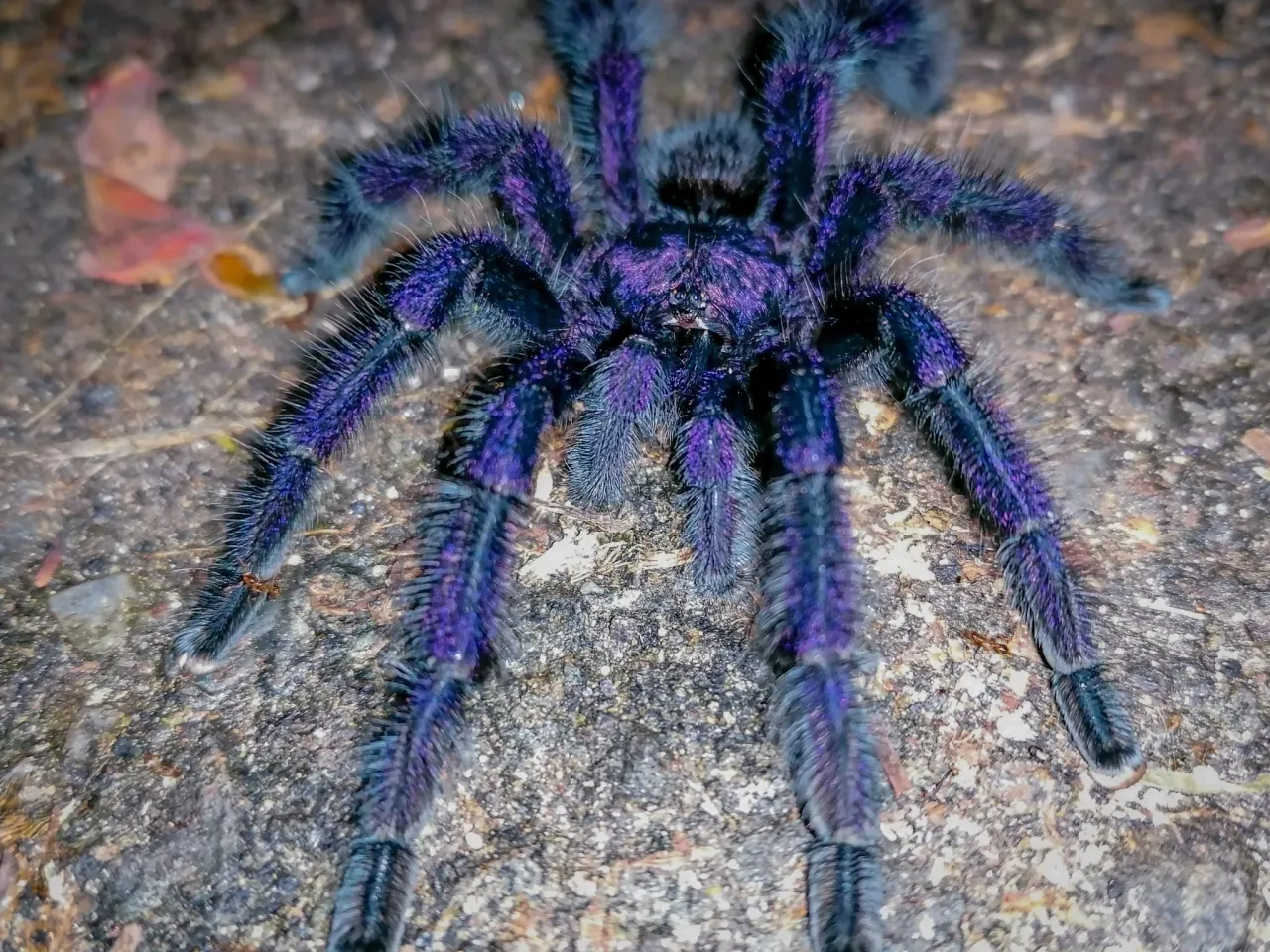What is a Purple Pinktoe Tarantula?
The Purple Pinktoe Tarantula, scientifically known as Avicularia avicularia, is a captivating and popular pet tarantula, especially favored by beginners. Native to the rainforests of South America, these arboreal arachnids are known for their vibrant colors and relatively docile temperament. Their appeal stems from their striking appearance, ease of care compared to some other species, and fascinating behavior. This guide provides comprehensive information to help you successfully care for your own Purple Pinktoe Tarantula.
Appearance and Characteristics
True to their name, Purple Pinktoe Tarantulas are known for their striking coloration. They typically have a dark body, with vibrant purple hues on their legs and pink or reddish pads on their feet. Their carapace (the shell-like covering of the cephalothorax) can also display iridescent purple or green tones. The abdomen is often covered in short, reddish hairs. These tarantulas are relatively small, with a leg span typically ranging from 4 to 6 inches. Their size and stunning appearance make them an excellent choice for those new to the world of tarantula keeping. They are also relatively fast-growing, adding to their appeal.
Habitat and Natural Environment
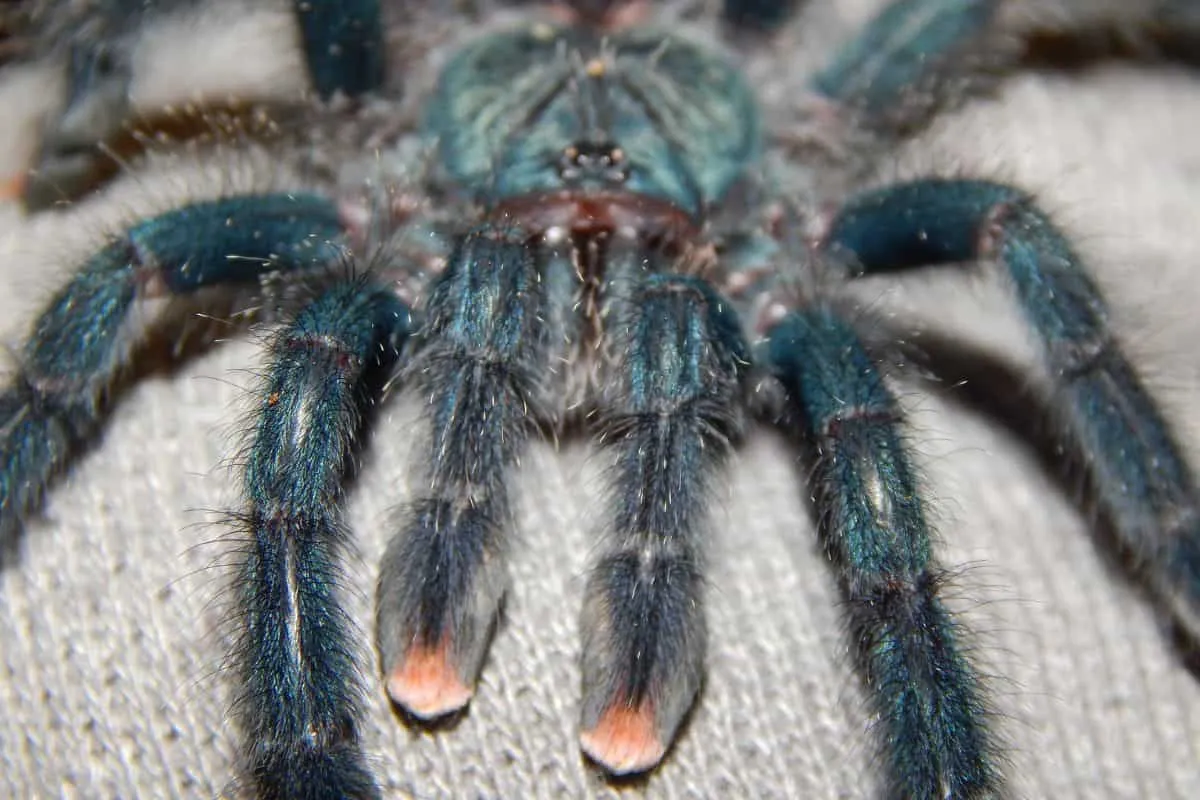
Understanding the natural habitat of the Purple Pinktoe Tarantula is key to providing proper care. In the wild, they inhabit tropical rainforests, primarily in areas with high humidity and dense vegetation. They are arboreal, meaning they live in trees, constructing silken retreats in branches, under leaves, or within tree hollows. Their natural environment is characterized by consistent temperatures, high humidity, and abundant insect prey. Replicating these conditions in captivity is essential for the health and well-being of your tarantula. Consider the natural environment when setting up the enclosure to make the tarantula feel safe and healthy.
Setting Up Your Purple Pinktoe Tarantula’s Enclosure
Creating a suitable enclosure is critical for the health and happiness of your Purple Pinktoe Tarantula. The enclosure should provide a secure, comfortable, and stimulating environment. The setup should mimic the tarantula’s natural habitat, focusing on vertical space as they are arboreal species. Proper setup is the first step in your journey to care for a healthy and long-living tarantula.
Choosing the Right Enclosure
For a Purple Pinktoe Tarantula, a vertical enclosure is essential. A 10-gallon aquarium or a specialized arboreal terrarium is often suitable for juveniles and subadults. Adult tarantulas will thrive in a larger enclosure, such as a 20-gallon high tank or a similar-sized terrarium. The enclosure should have a secure lid to prevent escapes and allow for proper ventilation. Ensure the enclosure is made of clear material, preferably glass or acrylic, to provide optimal visibility. Consider the tarantula’s future size when choosing an enclosure to avoid having to upgrade too frequently.
Substrate Selection for Comfort
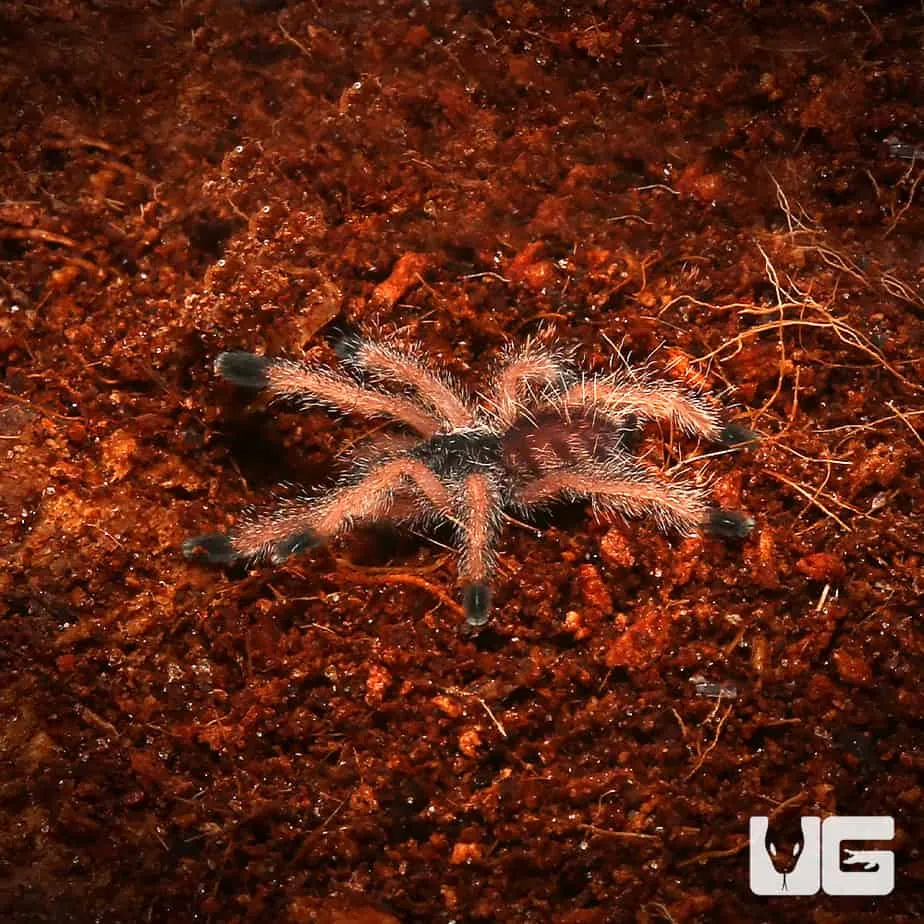
The substrate, or bedding, is an essential component of the enclosure. It serves multiple purposes, including providing a comfortable surface for the tarantula, absorbing moisture to maintain humidity, and allowing the tarantula to burrow if it chooses. A substrate that holds moisture well is recommended. Ideal choices include a mix of peat moss, coconut fiber (coir), and a small amount of vermiculite. Avoid substrates that can be harmful, such as gravel or sand, which can injure the tarantula. The depth of the substrate should be sufficient for the tarantula to burrow and feel secure.
Essential Decorations and Hides
Adding decorations and hides enhances the enclosure and provides enrichment for your tarantula. These decorations replicate the natural environment and allow the tarantula to feel secure and hide from view. Include vertical elements like cork bark, branches, or artificial plants. These provide climbing surfaces and places for the tarantula to build its web. A hide, such as a hollow log or a commercially available tarantula hide, is essential for the tarantula to retreat to when it feels threatened or wants to molt. Ensure all decorations are secure and do not have sharp edges that could injure the tarantula. The goal is to create a visually appealing and stimulating environment.
Temperature and Humidity Requirements
Maintaining the correct temperature and humidity levels is crucial for the health and well-being of your Purple Pinktoe Tarantula. These environmental factors significantly impact the tarantula’s metabolism, molting, and overall activity levels. The tarantula’s comfort and survival heavily depend on keeping these levels within the optimal range. Regular monitoring and adjustments are required to ensure their needs are met.
Maintaining Optimal Temperature
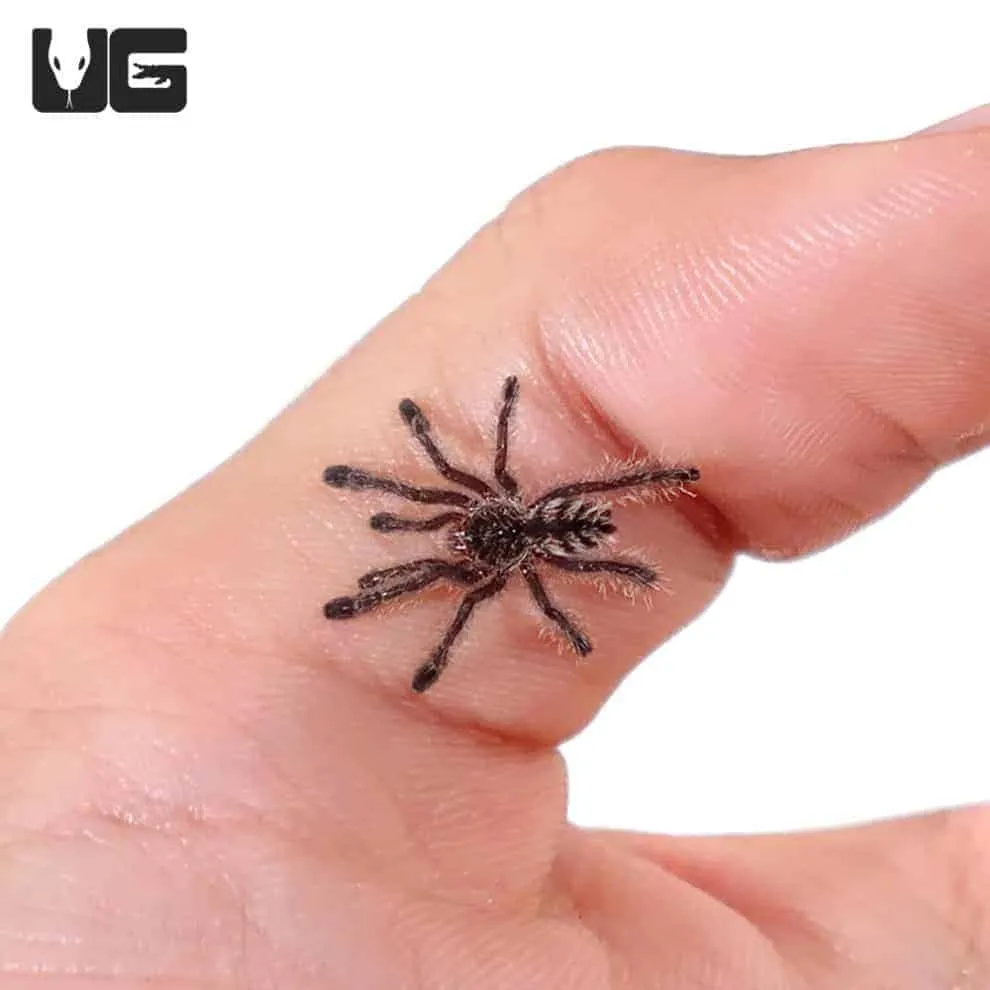
The ideal temperature range for a Purple Pinktoe Tarantula is between 75°F and 80°F (24°C and 27°C). You can use a heat lamp or an under-tank heater (UTH) to maintain this temperature. If using a heat lamp, ensure it is placed outside the enclosure to prevent burns, and monitor the temperature with a thermometer placed inside. Avoid direct heat sources, as these can be dangerous. Provide a temperature gradient within the enclosure, with a slightly warmer area and a cooler area. This allows the tarantula to regulate its body temperature by moving to its preferred spot. Regular temperature checks are essential.
Controlling Humidity Levels
Humidity is also very important. The recommended humidity level for Purple Pinktoe Tarantulas is between 70% and 80%. You can achieve this by misting the enclosure with dechlorinated water one or two times a week, depending on the ventilation and the ambient humidity of your home. Monitor the humidity using a hygrometer. Ensure the enclosure has adequate ventilation to prevent mold growth. Proper humidity is essential for successful molting; however, excessive humidity can lead to health problems. Observe your tarantula’s behavior; if it appears lethargic or is not eating, adjust the humidity levels.
Feeding Your Purple Pinktoe Tarantula
Proper nutrition is vital for the health, growth, and molting of your Purple Pinktoe Tarantula. Providing a balanced diet of appropriate food items ensures your tarantula receives the necessary nutrients. Feeding frequency and food selection should be adjusted according to the tarantula’s age and size. Providing variety in the diet will help prevent nutritional deficiencies.
Choosing the Right Food
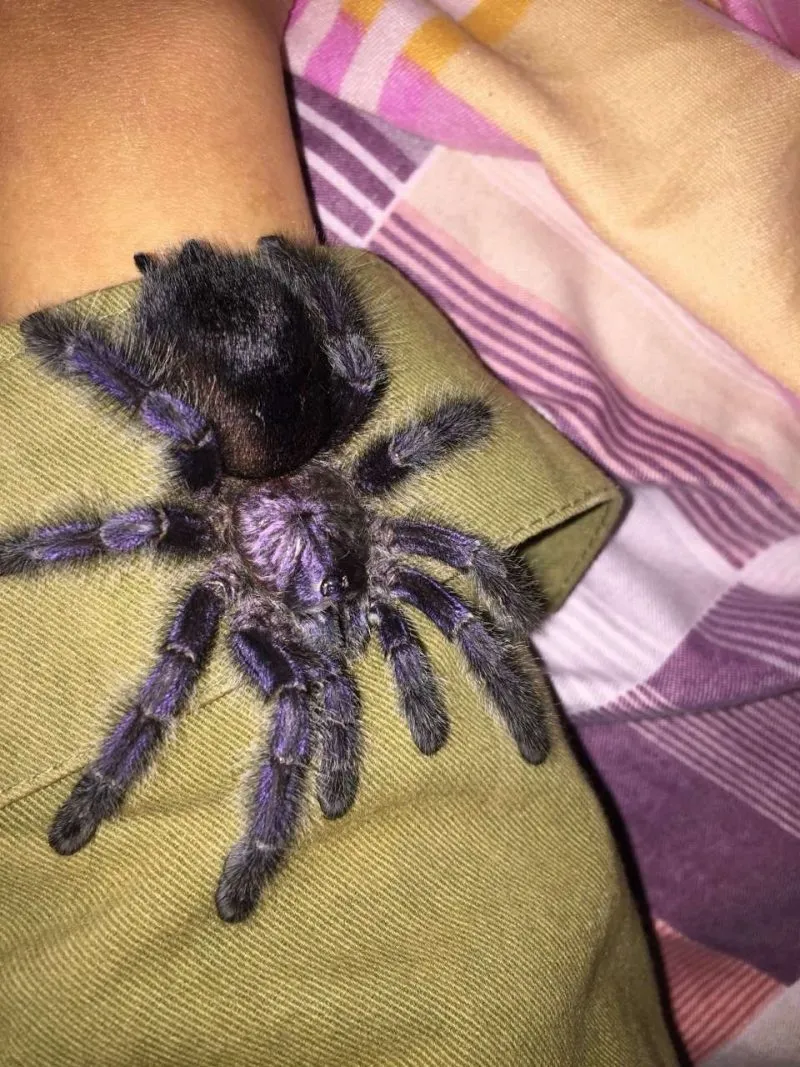
Purple Pinktoe Tarantulas are insectivores, primarily feeding on insects in the wild. In captivity, the most common food items include crickets, roaches (such as dubia roaches), mealworms, and other commercially available insects. The size of the food item should be appropriate for the tarantula’s size. A general rule is to offer food items that are no larger than the tarantula’s body. It’s essential to gut-load the insects before feeding them to your tarantula. Gut-loading involves feeding the insects a nutritious diet (such as vegetables and fruits) before offering them to the tarantula. This enhances the nutritional value of the meal and helps prevent nutritional deficiencies.
Feeding Frequency and Amounts
Feeding frequency depends on the tarantula’s age and appetite. Spiderlings and juveniles should be fed more frequently, usually every 2-3 days. Adult tarantulas can be fed once or twice a week. Observe your tarantula’s behavior to gauge its appetite. If it readily accepts food, you can continue feeding it. If it refuses food, it may be preparing to molt or simply not hungry. Remove any uneaten prey within 24 hours to prevent them from bothering the tarantula. Provide an appropriate amount of food to avoid overfeeding, which can lead to health problems. Always have a source of water available.
Watering and Hydration
Proper hydration is essential for the health and well-being of your Purple Pinktoe Tarantula. Tarantulas obtain water by drinking and absorbing moisture from their environment. Providing a clean water source and maintaining the correct humidity levels are vital aspects of tarantula care. Lack of water can lead to dehydration and potentially fatal health issues.
Daily Water Routine
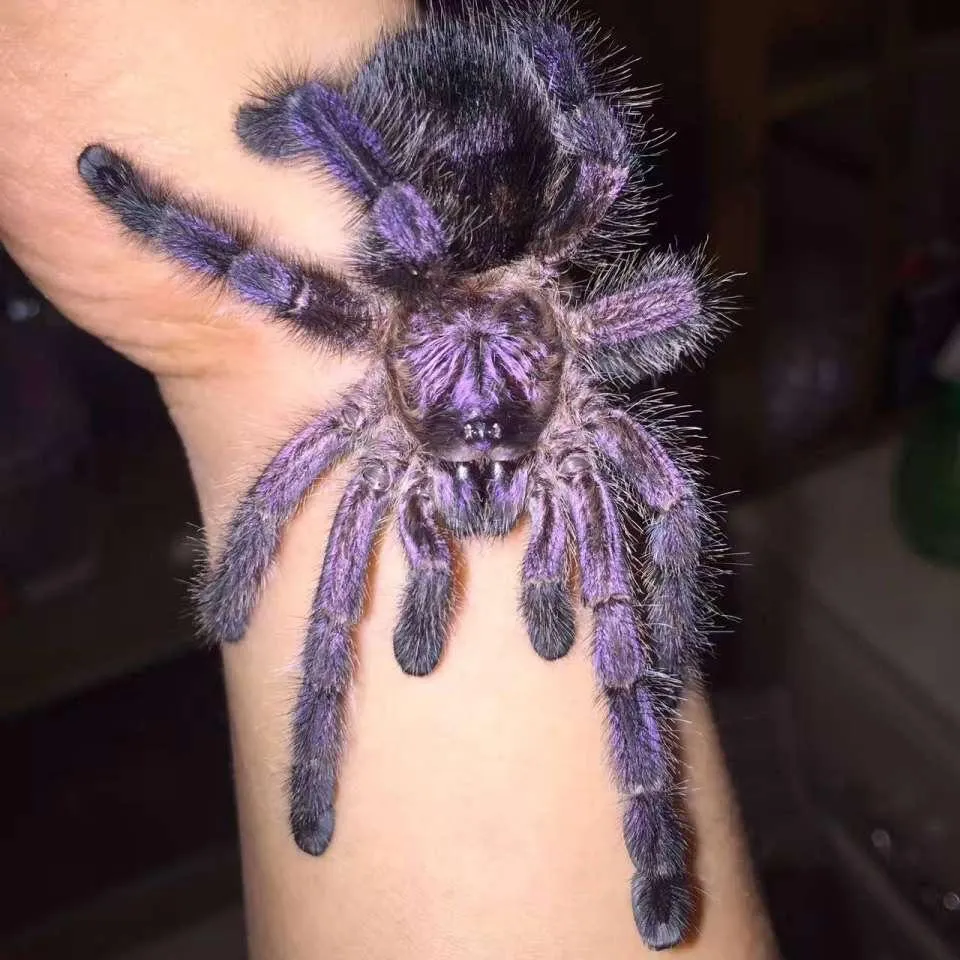
Always provide a shallow water dish with fresh, clean water. The water dish should be shallow enough that the tarantula can easily access it without risk of drowning. You should change the water daily to prevent the growth of bacteria and mold. Use dechlorinated water to avoid exposing your tarantula to harmful chemicals. Monitor the water level regularly and refill as needed. Keep the dish clean to prevent the spread of diseases.
Providing Proper Hydration
In addition to a water dish, you can maintain proper hydration by misting the enclosure with dechlorinated water. Misting helps maintain the required humidity levels and provides water droplets for the tarantula to drink. Mist the enclosure 1-2 times a week, depending on the humidity level. Avoid over-misting, as this can lead to excessive humidity and the growth of mold. Regularly observe your tarantula. If it appears dehydrated, adjust the watering and misting schedule accordingly.
Handling and Interaction
While Purple Pinktoe Tarantulas are known for their relatively docile temperament, handling should be approached with caution. Tarantulas can be easily stressed and can bite if they feel threatened. However, many keepers enjoy interacting with their tarantulas. Safe handling practices minimize the risk of injury to both the tarantula and the handler.
Safe Handling Techniques

If you choose to handle your Purple Pinktoe Tarantula, do so carefully and deliberately. Always handle the tarantula over a soft surface, such as a bed or a couch, in case it falls. Avoid sudden movements, as they can startle the tarantula. Use a soft brush to gently coax the tarantula onto your hand or allow it to walk onto your palm. Never grab or squeeze the tarantula. Remember, it is often best to observe your tarantula from a distance and respect its space. Handle it briefly, if at all, to avoid stressing it. Always wash your hands before and after handling your tarantula.
Understanding Tarantula Behavior
Understanding tarantula behavior is crucial for safe handling and proper care. Tarantulas communicate through their behavior. Learn to recognize signs of stress, such as a defensive posture (raising their front legs or showing their fangs), flicking hairs off their abdomen, or trying to escape. A relaxed tarantula will typically walk slowly, explore its enclosure, and may sit in its hide. Avoid handling a tarantula that shows signs of stress. If the tarantula is in a pre-molt phase, it is best to avoid handling it altogether. Observing your tarantula’s behavior helps you provide the best possible care and fosters a positive relationship with your pet.
Common Health Issues and Prevention
Like all animals, Purple Pinktoe Tarantulas can be susceptible to certain health issues. By being aware of potential problems and implementing preventative measures, you can ensure your tarantula remains healthy and thrives. Regular observation of your tarantula’s behavior, appearance, and environment is essential for early detection of any potential issues.
Identifying Potential Problems
Common health issues include dehydration, parasites, and injuries during molting. Dehydration can occur if the tarantula does not have access to fresh water or if humidity levels are too low. Parasites, such as mites, can sometimes infest tarantulas. Injuries during molting can happen if the enclosure is not properly maintained or if the tarantula’s environment is not stable. Other signs of illness include loss of appetite, lethargy, changes in posture, and unusual behaviors. Observe your tarantula closely, and consult a veterinarian or experienced tarantula keeper if you notice any concerning signs.
Preventative Care and Maintenance
Preventive care includes providing a clean and appropriate enclosure, proper temperature and humidity levels, a balanced diet, and a clean water source. Regular cleaning of the enclosure is crucial. Remove any uneaten food, feces, and shed exoskeletons promptly. Ensure proper ventilation to prevent the build-up of mold and bacteria. Quarantine any new tarantulas before introducing them to your existing collection to prevent the spread of diseases. Maintain consistent environmental conditions and avoid unnecessary handling to minimize stress. Regular observation of your tarantula’s behavior is the best way to identify any potential health problems early on.
Breeding and Reproduction
Breeding Purple Pinktoe Tarantulas can be a rewarding experience for experienced keepers. Successfully breeding tarantulas involves careful planning, preparation, and understanding of their reproductive behavior. This section provides a basic overview of the breeding process and the care of spiderlings.
Understanding the Breeding Process
Before attempting to breed Purple Pinktoe Tarantulas, you need to determine the sex of the tarantulas. This is usually done by examining their underside, where the presence or absence of a spermatheca (a female’s sperm storage organ) can determine the sex. Successful breeding involves introducing a mature male to a receptive female in a controlled environment. The male will approach the female, and if she is receptive, they will mate. After mating, the female will lay an egg sac containing dozens or even hundreds of eggs. It is critical to have sufficient space and resources to care for the resulting spiderlings.
Caring for Spiderlings
After the eggs hatch, the spiderlings will develop. The female often protects the egg sac and spiderlings. Once the spiderlings have molted, they need to be separated and housed individually. Providing appropriate-sized food and a suitable environment for the spiderlings is essential for their survival and growth. Feeding spiderlings requires smaller food items, such as fruit flies or pinhead crickets. The enclosure needs to be kept clean and appropriately humid. Caring for spiderlings can be a time-consuming process, but it is also a fulfilling one for those dedicated to tarantula keeping.
In conclusion, caring for a Purple Pinktoe Tarantula can be a fulfilling experience for beginners. By following the guidelines outlined in this guide, you can provide your tarantula with a safe, healthy, and stimulating environment. Remember to prioritize proper enclosure setup, temperature and humidity control, appropriate feeding and watering practices, and safe handling techniques. With proper care and attention, your Purple Pinktoe Tarantula can thrive, providing you with years of enjoyment.
